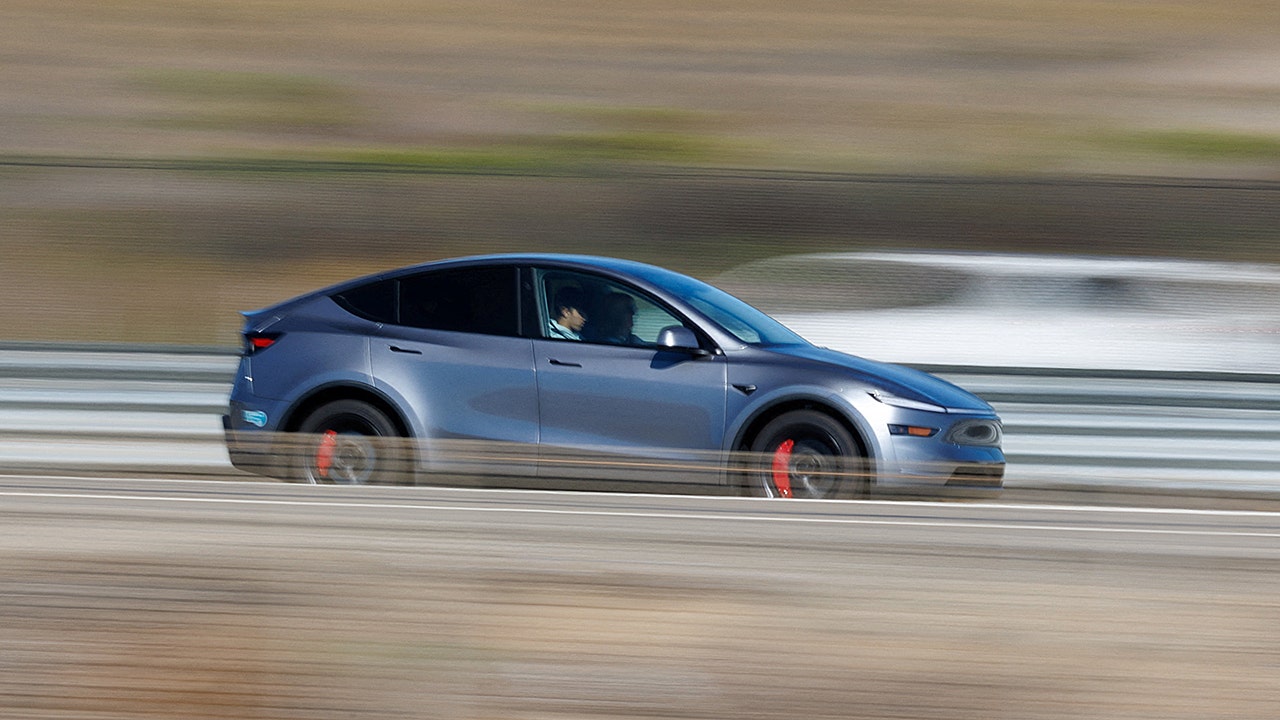Tesla has once again captured public attention with the reintroduction of its “Mad Max” mode in the Full Self-Driving (FSD) system, a feature designed to enable more aggressive driving behavior. This update comes amid heightened scrutiny from regulators and ongoing legal challenges from customers concerned about Tesla’s advanced driver-assist technologies. The return of Mad Max mode, which promotes faster speeds and more frequent lane changes, has sparked a mix of enthusiasm and concern among Tesla drivers, industry observers, and safety advocates.
The latest version of Tesla’s Full Self-Driving software, labeled FSD v14.1.2, marks a significant shift from last year’s major FSD v14 release that included “Sloth Mode,” an option for more cautious and slower driving. In contrast, Mad Max mode pushes the vehicle’s driving style toward the opposite end of the spectrum, offering a more assertive and dynamic experience behind the wheel. Tesla has described Mad Max as enabling higher speeds and more aggressive lane changes than the previously available “Hurry” mode, appealing to drivers who prefer a more confident driving style.
Mad Max mode is not a brand-new feature for Tesla. It was initially introduced in 2018 alongside the original Autopilot system. At that time, Elon Musk characterized it as useful for navigating aggressive urban traffic conditions. The name “Mad Max,” inspired by the dystopian action movie franchise, immediately drew attention for its bold and somewhat controversial branding. Now, with its return in the latest FSD update, Tesla is reigniting discussions about the safety and appropriateness of aggressive driver-assist features.
Within hours of the update’s release, reports surfaced from Tesla drivers and observers noting that vehicles operating in Mad Max mode were engaging in behaviors such as rolling through stop signs and exceeding speed limits. These early observations highlight the assertive nature of the mode and raise questions about its potential risks on public roads. While some Tesla enthusiasts praise Mad Max mode for making the driving experience feel more natural and responsive, critics argue that its timing is questionable. With investigations by entities like the National Highway Traffic Safety Administration (NHTSA) and California’s Department of Motor Vehicles already underway, the feature may be perceived as encouraging risky driving behavior at a sensitive moment for the company.
Tesla’s decision to bring back Mad Max mode serves several strategic purposes. Firstly, it underscores Tesla’s ongoing commitment to developing and refining its FSD software, signaling to customers and competitors alike that the company continues to innovate aggressively. Secondly, it caters to a subset of Tesla owners who prefer a faster, more assertive driving style, offering customizable options to suit different driver preferences. Lastly, the feature acts as a reminder that Tesla remains focused on its ambitious goal of achieving Level 4 autonomy—where a vehicle can operate independently without human intervention in most conditions—even though its current system is classified as Level 2, which requires constant driver supervision.
Owners of Tesla vehicles equipped with Full Self-Driving (Supervised) can access Mad Max mode through the car’s settings menu under Speed Profiles. Tesla’s speed-profile options include Chill, Standard, Hurry, and Mad Max, each progressively increasing how aggressively the vehicle responds to traffic conditions. Mad Max mode delivers quicker acceleration, more frequent lane changes, and reduced hesitation, creating a more assertive driving style. However, Tesla emphasizes that drivers must remain vigilant, keep their hands on the wheel, and be ready to take control at any moment, as the Full Self-Driving system does not replace human responsibility.
For other drivers sharing the road with Teslas, awareness of Mad Max mode is advisable. Vehicles operating in this mode may behave more unpredictably, accelerating or changing lanes more rapidly than expected. Maintaining a safe distance from Teslas using Mad Max mode can help reduce surprises and promote safer driving conditions for everyone.
Tesla’s reintroduction of Mad Max mode is both a strategic and provocative move. It revives a controversial early feature from the company’s Autopilot history, simultaneously showcasing Tesla’s technological advancements and sparking debate about the balance between innovation and road safety. The mode’s return serves as a reminder that Tesla continues to push the boundaries of driver-assist technology while testing public tolerance for these systems’ aggressive behaviors.
As Tesla moves forward in the race toward fully autonomous vehicles, the question remains whether Mad Max mode represents a bold step in that direction or an unnecessary risk that could undermine public trust and regulatory confidence. The feature’s aggressive nature highlights the tension between developing cutting-edge technology and ensuring that

